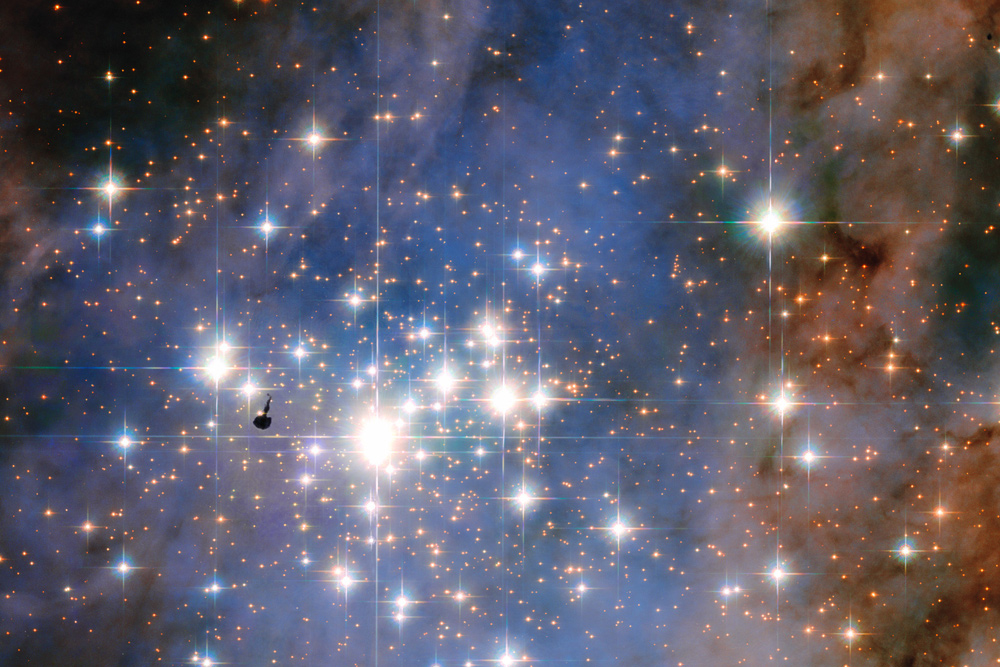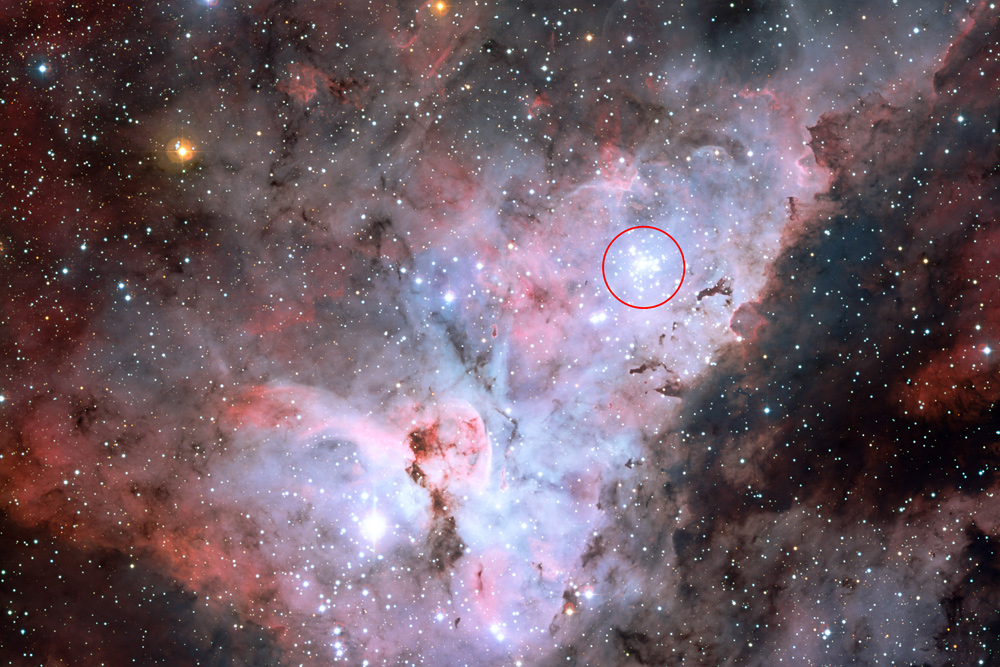Dozens of stars glimmer like jewels in a jaw-dropping new photo by the Hubble Space Telescope.
The new Hubble image depicts the star cluster Trumpler 14, a collection of about 2,000 young stars that lies 8,000 light-years from Earth, near the center of the Carina Nebula. You can zoom in on the glittering star cluster in this stunning video showcasing the new images.
"This region of space houses one of the highest concentrations of massive, luminous stars in the entire Milky Way — a spectacular family of young, bright, white-blue stars," European Space Agency (ESA) officials wrote in a escription of the photo, which was released today (Jan. 21). (Hubble is a joint mission involving NASA and ESA.) [Quiz: Take the Hubble Space Telescope Challenge]
"These stars are rapidly working their way through their vast supplies of hydrogen, and have only a few million years of life left before they meet a dramatic demise and explode as supernovae," ESA officials added in the statement.
The Trumpler 14 cluster is just 500,000 years old, ESA officials said, so many of its stars will live fast and die young. Earth's sun, by comparison, is still ticking along at the ripe old age of 4.6 billion years.
The brightest star in the new image is a supergiant called HD 93129Aa, which is about 80 times more massive, and 2.5 million times brighter, than the sun, ESA officials said. HD 93129Aa's surface temperature exceeds 90,000 degrees Fahrenheit (50,000 degrees Celsius), making the star one of the hottest of its type in the galaxy. (For comparison, the sun's surface temperature is about 10,000 degrees F, or 5,500 degrees C.)
HD 93129Aa is actually part of a binary system; it orbits a common center of mass along with its neighbor HD 93129Ab, ESA officials said.
Get the world’s most fascinating discoveries delivered straight to your inbox.
The Hubble Space Telescope launched in April 1990, and astronauts fixed a flaw in its primary mirror during a spacewalk in December 1993. Ever since, the famous observatory has been capturing gorgeous images that have captivated the public and helped to reshape researchers' understanding of the cosmos.
Follow Mike Wall on Twitter @michaeldwall and Google+. Follow us @Spacedotcom, Facebook or Google+. Originally published on Space.com.




